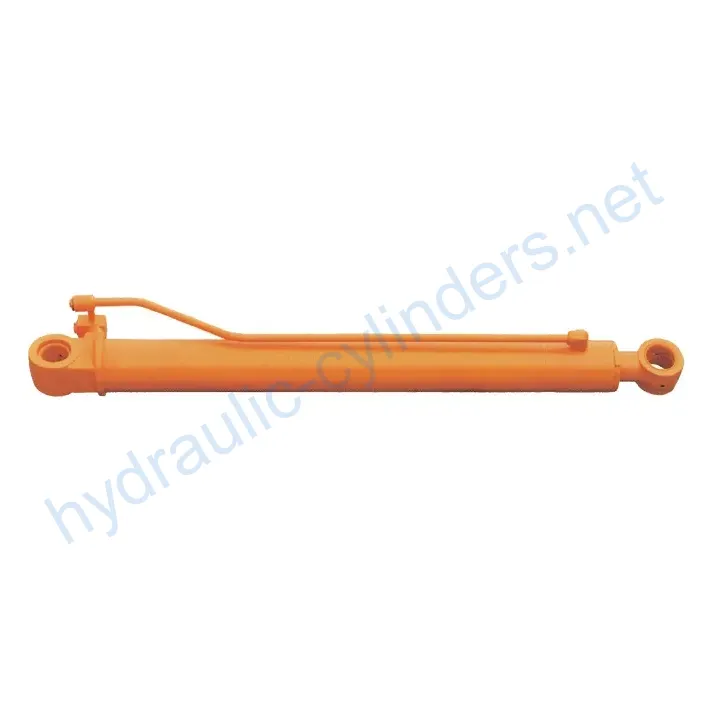Arm CylinderFor Hyundai Small Excavator R130-5
As one of the hydraulic cylinders manufacturers, suppliers, and exporters of mechanical products, We offer hydraulic cylinders and many other products.
Please get in touch with us for details.
Mail:sales@hydraulic-cylinders.net
Manufacturer supplier exporter of hydraulic cylinders.
Arm Cylinder for Hyundai Small Excavator R130-5
Product Definition
The Arm Cylinder is a specialized hydraulic cylinder designed to provide linear motion and power to the arm of various machinery, such as excavators, cranes, and robotic arms. It plays a vital role in hydraulic systems, enabling efficient movement and control of additional tools or attachments. These cylinders not only ensure smooth operation but also withstand heavy loads, ensuring high efficiency and reliability of the machinery in various working conditions.

Product Features
- High-Efficiency Transmission: The Arm Cylinder delivers powerful linear motion and force, ensuring efficient performance of the mechanical arm in various operations.
- Precise Control: Through the hydraulic system, the Arm Cylinder allows for precise motion control, making the operation of attached tools more flexible and accurate.
- Durability: Arm Cylinders are typically made of high-strength materials, providing excellent wear resistance and corrosion resistance, making them suitable for long-term use in harsh environments.
- Multi-functional Adaptability: These cylinders can be widely used in various mechanical equipment, such as excavators, cranes, and robotic arms, adapting to different job requirements.
- Easy Maintenance: Designed for ease of maintenance and replacement, Arm Cylinders facilitate regular inspections and maintenance, reducing equipment downtime.

Application Scenarios
- Construction Engineering: In excavators and cranes, the Arm Cylinder controls the movement of the bucket or boom, performing earthwork, material handling, and structural installation.
- Manufacturing Industry: In automated production lines, the Arm Cylinder is used for the motion of robotic arms, enabling processes such as assembly, welding, and material handling, thereby improving production efficiency and accuracy.
- Agricultural Machinery: In agricultural machinery such as harvesters and seeders, the Arm Cylinder controls the movement of operating arms, performing tasks such as seeding, fertilizing, and harvesting.
- Mining: In mining equipment, the Arm Cylinder controls the arm movement of mining machinery, facilitating ore extraction and transportation.
- Logistics and Transportation: In forklifts and handling robots, the Arm Cylinder controls the lifting and movement of forks, enabling material handling and stacking.
Design Considerations and Selection Criteria
- Bearing Capacity: Discuss the Arm Cylinder’s ability to withstand load and its importance in ensuring safe operation.
- Sealing: Discuss the use of various sealing components such as piston seals and rod seals, the selection of wear-resistant materials like polyurethane and nitrile rubber, and the importance of maintaining proper lubrication with hydraulic oil.
- Durability: Discuss the fine surface treatment of the cylinder body and threaded ends to enhance wear resistance and the need for regular inspection and preventive maintenance.
- Safety: Discuss the safety measures associated with the use of Arm Cylinders and the importance of adhering to safety guidelines and regulations.
- Maintenance: Provide tips for regular inspection and preventive maintenance measures to ensure the optimal performance and longevity of the Arm Cylinder.

Product Installation Guide
Follow these steps for proper installation of the Arm Cylinder:
- Step 1: Ensure the excavator or machinery is securely positioned and stable.
- Step 2: Attach the Arm Cylinder to the designated mounting points, following the manufacturer’s instructions.
- Step 3: Connect the hydraulic hoses to the appropriate ports on the Arm Cylinder.
- Step 4: Secure all connections and ensure there are no leaks.
- Step 5: Test the Arm Cylinder’s functionality by performing a trial operation.

Safety Considerations and Environmental Factors
When using Arm Cylinders, it is essential to prioritize safety measures to protect operators and prevent accidents. These safety measures include:
- Proper training and certification of operators.
- Regular inspection of the Arm Cylinder and associated hydraulic systems.
- Maintaining a clean and hazard-free work environment.
- Adhering to safety guidelines and regulations.
Fault Diagnosis and Common Issues
Common issues related to Arm Cylinders may include:
- Leakage of hydraulic fluid.
- Unusual noises during operation.
- Inconsistent or unstable arm movement.
To address these issues:
- Check for damaged seals or connections and replace them if necessary.
- Inspect the cylinder for any signs of damage or wear and perform maintenance or replacement as needed.
- Ensure proper lubrication of the Arm Cylinder and associated components.

Remember to organize the article logically, use subheadings for easy navigation, incorporate relevant images or charts to enhance understanding, and ensure the content is clear, concise, and suitable for readers with varying levels of technical knowledge.
About Us
We are a professional manufacturer of replacement hydraulic cylinders, offering a wide range of products. We have become one of the leading manufacturers and wholesalers of hydraulic cylinders in the domestic and international markets. With a commitment to excellence, we continuously improve our technical capabilities and production efficiency through refined manufacturing processes. By introducing advanced digital manufacturing equipment and professional testing systems, we optimize our manufacturing platform and enhance product quality control. Our goal is to meet the diverse needs of customers with principles of efficiency, accuracy, and high quality.


Author: lyl
Take a Tour of Our VR Factory:
Take a tour of our VR factory with the following
Hydraulic Cylinder Application:


